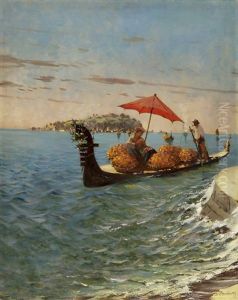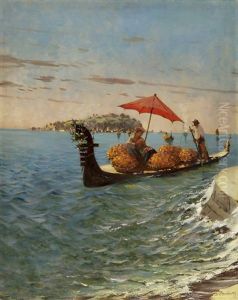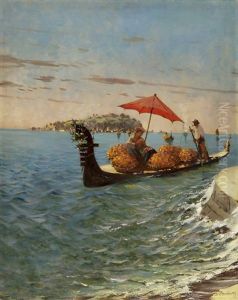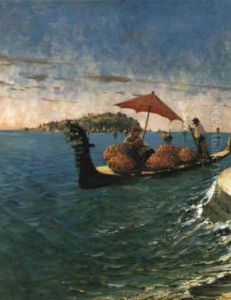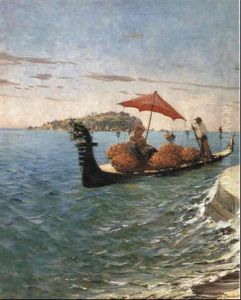Eugen Zardetti Paintings
Eugen Zardetti, born in 1854, was a Swiss artist known for his contributions to the Art Nouveau movement, although his name is not as widely recognized as some of his contemporaries. Zardetti's work was typified by its intricate designs, often incorporating natural motifs and elements of fantasy, which were common themes in Art Nouveau. He was adept in various mediums, including painting, illustration, and decorative arts, allowing him to explore and express the aesthetic ideals of the time in multiple forms.
Zardetti's artistic journey began in his native Switzerland, where he was initially trained in traditional art techniques. However, his style and interests evolved significantly after he traveled to France and became exposed to the burgeoning Art Nouveau movement, which was sweeping through Paris and other parts of Europe in the late 19th century. This exposure marked a turning point in Zardetti's career, as he began to incorporate the movement's characteristic flowing lines, organic shapes, and emphasis on decoration into his own work.
Despite his talent and the beauty of his creations, Eugen Zardetti struggled to gain the same level of fame and recognition as some of his peers. His works were appreciated by those who knew of them, but his relatively short life, ending in 1895, limited his output and the breadth of his influence. Nevertheless, Zardetti's contributions to the Art Nouveau movement are undeniable, and his works, though less known, remain valuable examples of the style's elegance and intricacy.
After his death, Zardetti's pieces have occasionally been rediscovered and showcased in exhibitions focusing on the Art Nouveau period, allowing a new generation of art lovers to appreciate his unique take on the movement. Despite the challenges in piecing together a comprehensive view of his life and career due to the scarcity of records, Eugen Zardetti remains an intriguing figure in art history, representing the diverse and rich tapestry of artists who contributed to the development of Art Nouveau at the turn of the 20th century.


